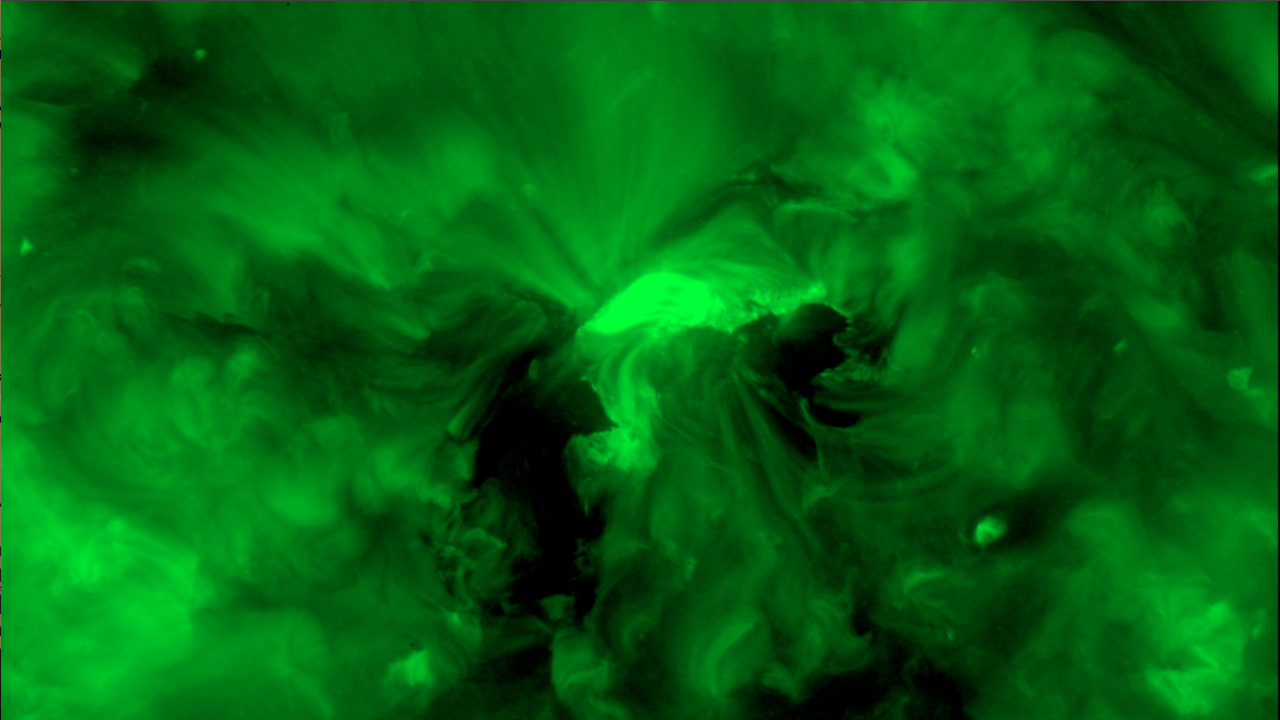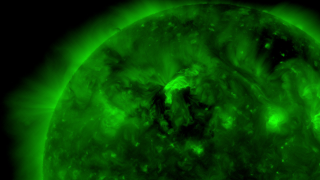SDO Catches Surf Waves on the Sun
Since scientists know how these kinds of waves — initiated by a Kelvin-Helmholtz instability if you're being technical — disperse energy in the water, they can use this information to better understand the corona. This in turn, may help solve an enduring mystery of why the corona is thousands of times hotter than originally expected.
Kelvin-Helmholtz instabilities occur when two fluids of different densities or different speeds flow by each other. In the case of ocean waves, that's the dense water and the lighter air. As they flow past each other, slight ripples can be quickly amplified into the giant waves loved by surfers. In the case of the solar atmosphere, which is made of a very hot and electrically charged gas called plasma, the two flows come from an expanse of plasma erupting off the sun's surface as it passes by plasma that is not erupting. The difference in flow speeds and densities across this boundary sparks the instability that builds into the waves.
In order to confirm this description, the team developed a computer model to see what takes place in the region. Their model showed that these conditions could indeed lead to giant surfing waves rolling through the corona. Seeing the big waves suggests they can cascade down to smaller forms of turbulence too. Scientists believe that the friction created by turbulence — the simple rolling of material over and around itself — could help add heating energy to the corona. The analogy is the way froth at the top of a surfing wave provides friction that will heat up the wave.

Related
For More Information
Credits
Leon Ofman (NASA/GSFC): Interviewee
Chris Smith (HTSI): Narrator
Scott Wiessinger (UMBC): Producer
Leon Ofman (NASA/GSFC): Scientist
Chris Smith (HTSI): Videographer
Scott Wiessinger (UMBC): Videographer
Michelle Williams (UMBC): Videographer
Jennifer A. Shoemaker (UMBC): Videographer
Karen Fox (ADNET Systems, Inc.): Writer
Scott Wiessinger (UMBC): Writer
NASA/Goddard Space Flight Center
https://svs.gsfc.nasa.gov/10745
Mission:
SDO
Data Used:
SDO/AIA/211 Filter also referred to as: AIA 211
JOINT SCIENCE OPERATIONS CENTERSDO/AIA/193 Filter also referred to as: AIA 193
JOINT SCIENCE OPERATIONS CENTERSDO/AIA/171 Filter also referred to as: AIA 171
JOINT SCIENCE OPERATIONS CENTERThis item is part of these series:
Narrated Movies
SDO - Edited Features
SDO - Interviews
Goddard Shorts
Goddard TV Tape:
G2011-022 -- SDO Turbulence on the Sun
Keywords:
SVS >> First Light
SVS >> HDTV
SVS >> Magnetic Fields
SVS >> Plasma
SVS >> Spacecraft
SVS >> Waves
GCMD >> Earth Science >> Sun-earth Interactions
GCMD >> Earth Science >> Sun-earth Interactions >> Solar Activity
SVS >> SDO
SVS >> Edited Feature
SVS >> Solar Dynamics Observatory
SVS >> Space
SVS >> Interview
SVS >> Heliophysics
DLESE >> Narrated
NASA Science >> Sun
GCMD >> Earth Science >> Sun-earth Interactions >> Solar Activity >> Coronal Mass Ejections
SVS >> Extreme Ultraviolet Imaging
SVS >> EUV Imaging
GCMD keywords can be found on the Internet with the following citation: Olsen, L.M., G. Major, K. Shein, J. Scialdone, S. Ritz, T. Stevens, M. Morahan, A. Aleman, R. Vogel, S. Leicester, H. Weir, M. Meaux, S. Grebas, C.Solomon, M. Holland, T. Northcutt, R. A. Restrepo, R. Bilodeau, 2013. NASA/Global Change Master Directory (GCMD) Earth Science Keywords. Version 8.0.0.0.0












